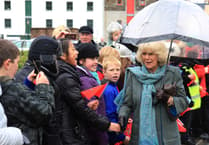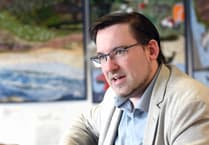A teenager has had his drug driving conviction quashed – after the appeal court ruled there was a question mark over how the blood sample was stored before testing.
The judgment could have implications for other drug driving convictions that pass through the Manx courts.
Kristian Alessandro Francesco Parlato, 19, was convicted following a summary court trial in June this year of driving under the influence of a metabolite of cocaine.
He was fined £1,000, ordered to pay prosecution costs of £450 and disqualified from driving for two years.
But Mr Parlato, of Windermere Avenue, Onchan, appealed on the grounds of a lack of evidence about how the blood sample was stored and transported to the testing laboratory in the UK.
His lawyer questioned whether the blood tested was even the same as the sample that was taken from his client.
And the appeal court has ruled that the conviction was unsafe and should be reversed.
Mr Parlato was stopped by police while driving down Bray Hill in a white Ford Fiesta with a defecting rear brake light at about 11.20pm on August 24 last year.
He was arrested after a roadside drug wipe tested positive for cannabis. Two grinders were found underneath the driver’s seat with traces of cannabis inside.
At police headquarters, the defendant provided a sample of blood for forensic analysis.
Results from the UK test lab showed benzoylegonine – the main metabolite of cocaine – was present at a reading of 68 micrograms per litre of blood.
The legal limit is 50.
Magistrates concluded that they were satisfied beyond reasonable doubt that the Defendant drove the car over the specified amount of benzoylegonine in his blood.
They said they were satisfied that the sample that was received by the lab was the sample of blood taken from the defendant and that the reading was accurate.
But in his appeal, Mr Parlato’s advocate argued there was no evidence before the magistrates of the continuity of the sample.
He said the justices had erred in law by making a finding of fact unsupported by evidence, that the blood taken from the appellant was the same blood later tested.
There was no information as to how the blood sample was stored prior to its arrival at the laboratory, and only limited evidence of the method of transportation.
The prosecution expert told the court: ‘All I can say is it was frozen on arrival. I don’t know how it was stored prior to being collected by the courier and arriving at Cellmark Forensics.
That is something that would be outside of our knowledge.’
Defence advocate Jim Travers said in his closing submission: ‘There’s been no evidence put before the court with respect to the storage on the Isle of Man of the relevant sample or indeed the transportation of the sample off island as far as the laboratory in the UK. We simply do not know.’
Judge of Appeal Anthony Cross and Deemster Andrew Corlett said justices were right to conclude the sample tested was the same one taken from the defendant as it was clearly marked and it strained credulity to believe it came from a different person.
But they ruled that magistrates had erred in two ways.
They said they could not be satisfied that the reading was accurate in light of the absence of the evidence as to storage in the island.
And they said magistrates should have set out briefly why they came to the conclusion they did.
‘For these reasons we conclude that the conviction is unsafe,’ he said.
‘We note of course that Mr Travers could and should have raised the absence of reasons with the bench. That failure though cannot render an unsafe conviction safe.’
A spokesman for the Department of Home Affairs said: ‘Continuity of the exhibit was a key concern in this case, and the specific facts are tailored to address that issue.
‘As with any prosecution, all evidence is reviewed in the light of the prosecutor code test.
‘In instances where continuity is challenged, the evidence will be obtained, reviewed and served. Cases that do not meet the evidential test would be withdrawn.’
He added: ‘To ensure consistency in handling future cases, all case files will include evidence demonstrating the continuity of exhibits when challenged.’




